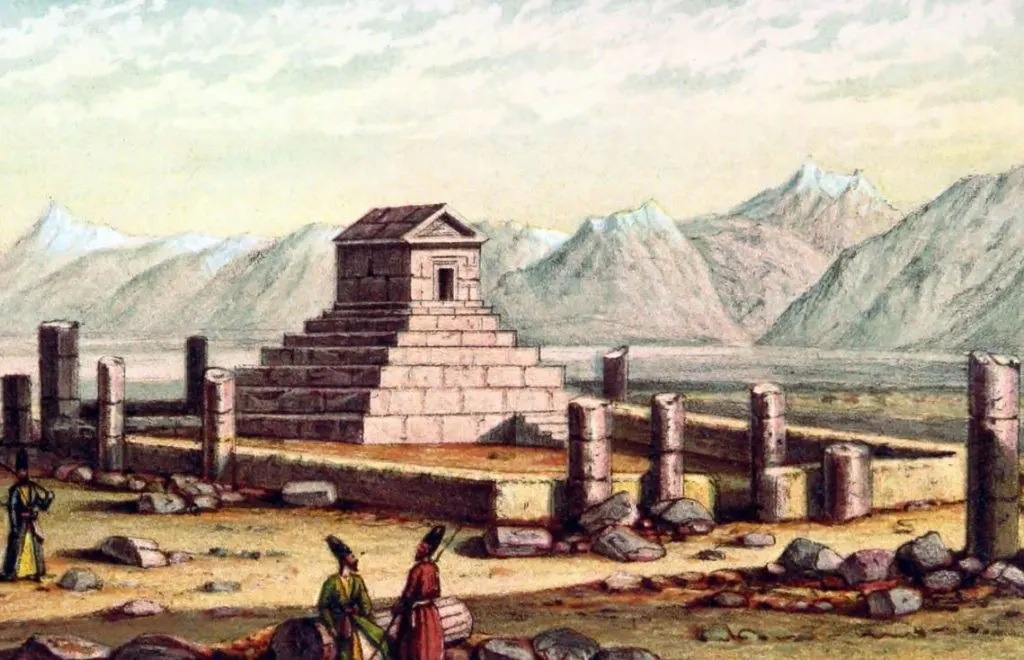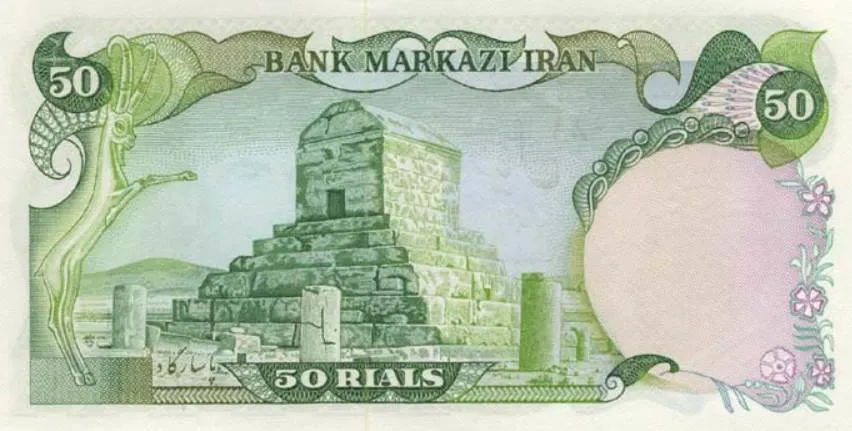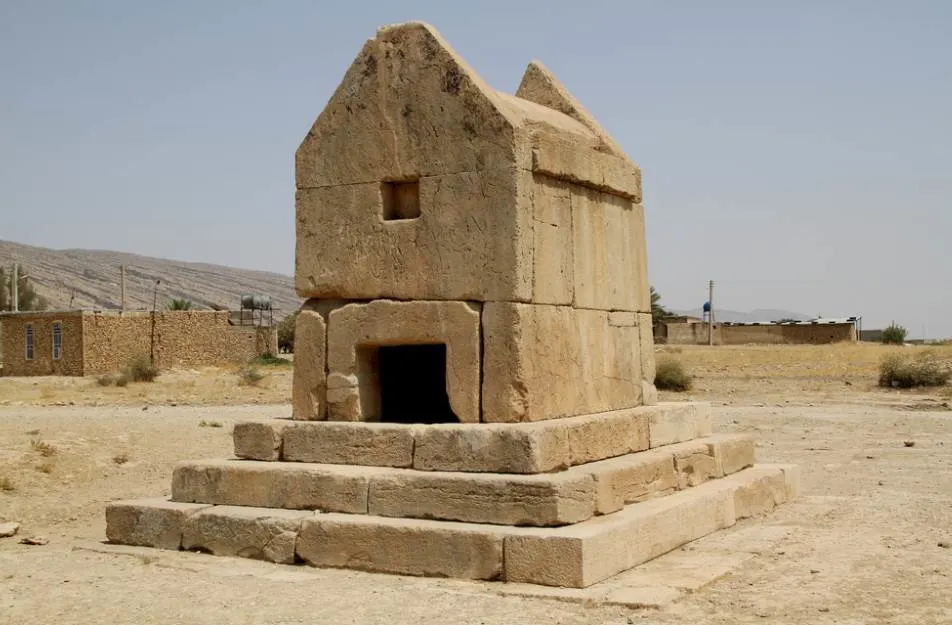Countless empires have come and gone all across the world in the past Millennia. This also includes the leaders who reigned over them. One of these became the founder of the first Persian Empire in the 6th century B.C.
Let’s take a closer look at some of the most interesting facts about the Tomb of Cyrus, a monument in Iran that is presumed to be the final resting place of the ancient ruler known as “Cyrus the Great.”
1. It’s located in the Fars Province in southern Iran
The structure which is known as the “Tomb of Cyrus” is located in the Fars Province, one of the thirty-one provinces that make up Iran. This province is situated in the southeastern part of the country.
It’s situated in a much larger archaeological site known as “Pasargadae.” this site consists of the remains of the ancient city with the same name that was once the capital of the first Persian Empire known as the Achaemenid Empire.
Cyrus the Great (600-530 B.C.) was the founder of this empire. Under his successors it would eventually grow to the largest empire the world had ever seen by then, ruling over an area that stretched from the Balkans in Eastern Europe in the west to the Indus Valley in the east.

2. The structure wasn’t identified as Cyrus’ Tomb until the 19th century
What’s remarkable about this structure is that it wasn’t identified as the tomb of the great leader of the first Persian Empire until the 19th century. Before that, it was known as the “Tomb of Suleiman’s Mother.”
This was a reference to either a biblical woman named Bathsheba, the wife of King David and the mother of Solomon, or to Sulayman ibn Abd al-Malik, an early Caliph in the region during the 8th century A.D.
This doesn’t mean that the tomb was only rediscovered in the 19th century. Europeans such as Venetian traveler Giosafat Barbaro (1413-1494) and German adventurer Johan Albrecht de Mandelslo (2616-1644) already laid eyes upon it was before that.
The tomb was identified as that of Cyrus by British diplomat James Justinian Morier (1782-1849). He did so by linking a text written by Greek Historian Arrian (86-160 A.D.) who provided a clear description of what was then known to be the Tomb of Cyrus.

3. It’s a relatively small but extremely durable structure
Even though the tomb is a relatively small structure, it has been standing in this location for the past two and a half millennia. That’s mainly because it was built in such a way that it could stand the test of time.
One of the most fascinating facts about the Tomb of Cyrus is that it’s considered to be the oldest base-isolated structure in the world.
This means that the superstructure of the tomb doesn’t directly rest on the foundation it was built on. This pretty much makes it earthquake-proof, which obviously was quite an advanced technique at the time.
Regardless, it’s a relatively small structure with dimensions of:
- The stone platform that serves as the foundation has a length of 13.35 meters (43.79 feet) and a width of 12.3 meters (40.35 feet).
- The structure stands just over 11 meters (36 feet) tall.
- The tomb room itself has a length of 3.17 meters (10.4 feet), a width of 2.11 meters (6.92 feet), and a height of 2.11 meters (6.92 feet) as well.
- The walls of the room are up to 1.5 meters (4.92 feet) thick.
- The entrance to the room is 78 centimeters (2.55 feet) wide and 140 centimeters (4.59 feet) high.

4. The tomb used to be encircled with multiple rows of columns
Another remarkable fact about Cyrus’ Tomb is that the Europeans who laid eyes upon it until the 19th century described an element that is missing today, multiple rows of large columns.
These supposedly encircled the tomb but are nowhere to be found today. One German scholar named Franz Heinrich Weisbach wrote that there were 22 of these columns that faced the tomb on 3 sides, each side having a length of approximately 30 meters (98 feet).
British historian Kerr Porter wrote multiple decades earlier in 1818 that 24 columns were encircling the tomb that each had a diameter of about 1 meter (3 feet).
There were also traces of an exterior wall with the remains of a gate, which means that this tomb was most probably completely sealed off in ancient times.

5. It’s one of the most important cultural heritage sites in Iran
To say that the Tomb of Cyrus the Great is an important cultural monument in Iran is an understatement. Iranians celebrate “Cyrus the Great Day” on October 29 of every year, the day on which he conquered entered Babylon.
During the Persian New Year, a day that is known as “Nowruz” and which falls on or around March 21, celebrations are conducted around the tomb. Numerous people gather around the tomb to celebrate in this important location.
The tomb was also featured multiple times on Iranian banknotes, an honor only reserved for the most important national monuments.
The main reason for all of this is simple, Cyrus the Great is concerned to be the founding father of Persia and therefore modern-day Iran, making him one of the most important figures in the country’s history.

More interesting facts about the Tomb of Cyrus
6. The location of the tomb today is known as the “Pasargad Plain.” When the city of Pasargadae was still thriving during the first Persian Empire, the tomb was located in its southern part in what was then an area called the “Royal Park.”
Even though the tomb appears to be standing in a rather desolate location today, the climate in the area was quite a bit different back then and various types of trees were planted here. This means that the tomb was situated inside a grove that was watered by a stream and surrounded by a meadow of long grass.
7. The tomb actually consists of 2 separate structures. The main structure is the platform which consists of 6 different steps. The second structure is the tomb room which was placed on top of this stepped platform.
8. likely, the tomb room was elaborately decorated with plenty of riches. The ancient Greek historian Strabo mentioned that when Alexander the Great entered the tomb after conquering the city, he found a golden couch and golden coffin.
There were also plenty of ornaments located here that were decorated with precious stones. Unfortunately, when the world about these goodies had spread by then and all except the couch and coffin were robbed during his second visit to the tomb.

9. Even though the design of the tomb resembles that of the Ziggurats built in Mesopotamia and the region surrounding it, as the Great Ziggurat of Ur in modern-day Iraq, it still has other influences as well.
Some of these include the architecture of Elam, Babylon, Assyria, ancient Egypt, and even Anatolia. Even though not much of it remains today, the only real decoration on the tomb itself is a rosette design found just above the entrance door.
10. This particular tomb wasn’t the first of its kind to be built like this. The grandfather of Cyrus the Great was a man named Cyrus I and his tomb is possibly located in the province of Bushehr just south of the remains of the ancient city of Pasargadae.
This tomb is known as Gur-e-Dokhtar and is possibly the tomb of Cyrus I. The resemblance of the design is striking, even though it’s much smaller than the tomb of Cyrus II.

